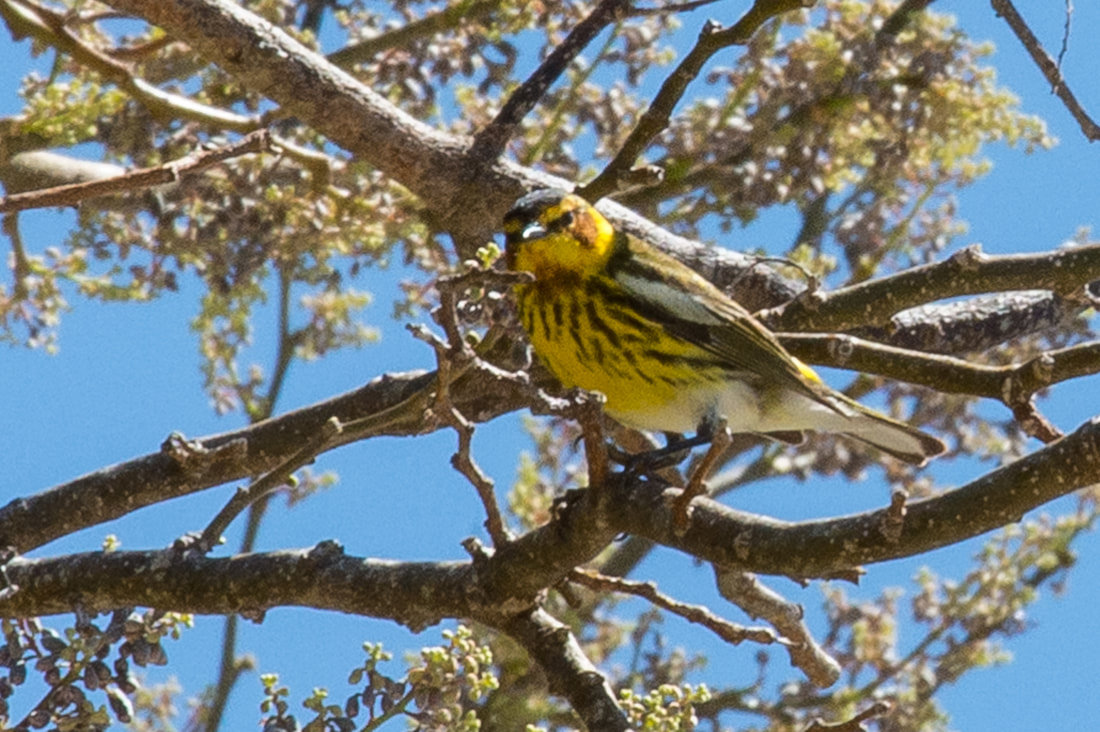|
There are the visible and the invisible birds. There are the ever-present seagulls perching on channel markers, that follow a the boat’s wake, or swoop down on outdoor diners as they jockey for crumbs. Hungry pelicans float beside fish cleaning stations in eager anticipation of the scraps from returning anglers. Noisy red-bellied woodpeckers tap tap tap-ing on tree bark in search of small bugs that constitute their diet. The bright red male cardinal and mate, sporting a slightly duller flock of feathers, flit through the shrubs. The noisy grackles taunt the indoor cats through the screen enclosure, and consistently poop in the rain gauge. The mockingbird, Florida's state bird, and the mourning doves, with their coo-coo-cooing, are all familiar sights and sounds… living in our midst. We find these birds not just in nature, also in our neighborhoods. The tall white egret named “sam” or “george” whose regular circuit of sea walls, docks and neighborhood parks have earned him notoriety. Same too, the white ibis, are at home on the tidal mud-flats, but also show up on our front lawns and green spaces, probing the grass with their long beaks for whatever hidden treats lie in the soil. Immature ibis are brown with a white belly. Like an ibis flock seen at a crosswalk, some are well adapted to asphalt, as are the roosters and hens in the Tradewinds parking lot. We don’t have to search them out… they are in our midst. In the northern end of the Keys, at the entrance to our island chain, lies the unique tropical habitat of the Upper Keys. Starting at the Circle K / mm 106, and extending 10 miles to the north is a two lane thoroughfare with bicycle path, called CR-905 or Card Sound Road. On each side is preservation land, I fondly refer to as the "hedge." On the west side of the road is Federal land, known as Crocodile Lake National Wildlife Refuge, on the east side of CR-905 is State preservation land, Key Largo Hammocks State Botanical site. Ever wonder what is behind that hedge? Fifty years ago it was all platted for development. There was a monster development planned called “Port Bougainville” just a mile north of the circle K, oceanside. Environmentalists and concerned folks, most notably conservationist Dagny Johnson fought for its protection. The goal of the acquisition was to connect parcels of nature, into one contiguous uninterrupted habitat. This preserved land contains an impressive collection of mature hammock, as well as recovering habitat, formally scarified and slated for development. The park entrance is designated by an arch left from the former “Port B” development, and portions are open to the public for passive recreational use such as walking and observing nature. One recent Sunday morning I met up with a group of naturalists at the entrance to “Port B”. They had cameras, and binoculars, smelled of “Keys Cologne” mosquito repellant, and were covered up with long sleeves, long pants and hats with mosquito netting. For the next hour or so, we ambled through the "Port B”. The slightest movement in the brush would cause us to stop in strict attention. Our Upper Keys habitat contains a rich diversity of native plants, found only here in North America and add to that the migrating species who feed and rest here on their journeys North and South. The depth of the naturalists observations made me realize, "where have I been?" Though I understand the importance of native habitat for sustenance of wildlife, and can recite facts from my reading, this was nature LIVE! While learning about the plants and wildlife, the camera is a great tool for making positive identification. There is an app called iNaturalist where experts and researchers are quick to provide identification of plants and wildlife, simply from a photo and location provided from your phone.
After an hour or so ambling through the "Port B", we opted to head south under the power lines next to the road. The sound of any songbirds were drowned out by the noise from the backed up line of cars trying to access US1. We pass a few littered sites, including old toilets, construction and household debris chucked into the woods. Flashback to what Card Sound Road used to look like pre-cleanup and park acquisition. We enjoyed a wonderful lunch at (another kind of bird) Buzzards Roost, talked about the morning’s discoveries, and shared photo successes. A wonderful meal and a park adventure, fresh air, and exercise provided me with a total reset. Nature, it was what attracted me to the Keys in the first place, and yes though it is forever changing and becoming “less rustic”, we must share with all our visitors and friends the importance of preservation of nature, not only to sustain wildlife, but also for our quality of life.
0 Comments
|
CAROL ELLIS
This photographic website provides me the opportunity for self-expression, for sharing Archives
February 2024
TAGS
All
|
© Copyright 2022. Carol Ellis Photography.
All Rights Reserved.






 RSS Feed
RSS Feed
